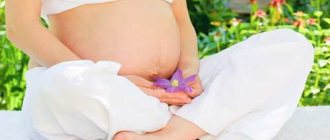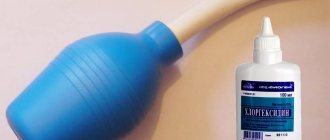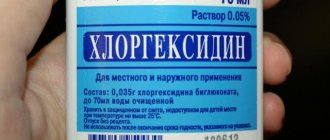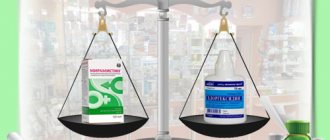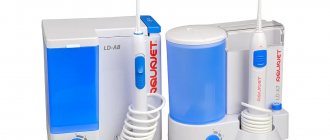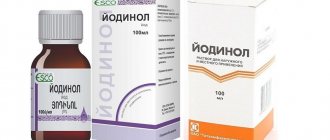Chlorhexidine belongs to the group of broad-spectrum antiseptic and bactericidal drugs for external and local use. It is based on the substance bigluconate, as well as purified water or alcohol. The solution is available on the market in different concentrations. In this article we look in more detail at what chlorhexidine solution is and where it is used.
Where is Chlorhexidine used?
The pharmaceutical product is used for the treatment and prevention of diseases caused by microorganisms sensitive to Chlorhexidine.
Depending on the concentration of the substance, the medicine can be used in the treatment of various pathologies.
After operations, in order to prevent infectious pathologies, doctors resort to using a pharmaceutical solution.
Chlorhexidine is often used for dental purposes for the treatment of dentures. In some cases, medication is used to treat periodontitis, stomatitis, and they are used to rinse the gums.
The medicine is used in:
- Urology
- Gynecology
- Surgery
When is chlorhexidine needed? Indications
- After tooth extraction . The doctor may prescribe oral baths with chlorhexidine if the tooth was removed due to severe inflammation and not planned. During normal extractions, there is no need to make baths or rinse, so as not to damage the blood clot in the socket of the extracted tooth.
- For stomatitis . This is an inflammation of the mucous membranes of the cheeks and lips, which manifests itself in small wounds. Inflammation can be caused by various reasons: hormonal, taking medications, allergic reactions and household ones, for example, when eating crackers or seeds.
- For inflammation of the gums . In this case, you can use an antiseptic at home for pain and discomfort, but you should definitely see a doctor. Most often, the gums become inflamed due to supra- and subgingival plaque that needs to be removed. The procedure is called periodontal oral hygiene and after it the doctor will no longer prescribe chlorhexidine.
This is due to the peculiarity of the product to create a film on the surface of the teeth, to which new plaque and coloring pigments will “stick”. Therefore, after a course of chlorhexidine, a dark plaque forms on the teeth. Residues of food “stick” to this roughness, which are already difficult to remove on your own, they begin to provoke inflammation and the problem appears all over again. Thus, all the benefits of treatment are negated.
Contraindications
Chlorhexidine is contraindicated:
- In case of hypersensitivity to the components of the drug
- People suffering from dermatitis
- Do not use together with other antiseptics, for example, with hydrogen peroxide
- For ophthalmic use, rinsing the eyes with this product is prohibited.
- For disinfection of the surgical field
- After intervention on the auditory canal and central nervous system
It is important to know that the pharmaceutical product should be used with caution when treating children.
Chlorhexidine and coronavirus
It has been proven that alcohol-based antiseptics are effective against coronavirus, and its content should be at least 60%, but preferably more. Therefore, chlorhexidine in an aqueous solution effectively copes with bacteria, but not with viruses.
But, as we said above, chlorhexidine is also made with alcohol, which makes this antiseptic effective in the fight against COVID 19. To do this, you can purchase an alcohol solution of chlorhexidine with a concentration of 0.5% at the pharmacy. Another option: take a 20% aqueous solution of the substance and a 70% alcohol-containing liquid and mix these two components in a ratio of 1 to 40. You need to treat your hands with the composition according to this principle:
- First, wash your hands with soap for 15 seconds.
- Then rub in the alcohol solution of chlorhexidine for 2 minutes.
- The amount of liquid rubbed in should be approximately 5 ml.
But you can wipe surfaces with aqueous solutions; with prolonged contact with the pathogen, most of the virus will still be destroyed.
Often, antiseptics with chlorhexidine are produced in the form of a gel containing alcohol and depanthenol, which moisturizes the skin.
Brief instructions for use
To prevent sexually transmitted diseases, after unprotected sexual intercourse, after a maximum of 2 hours, 2-3 ml of a 0.5% solution should be administered into the urinary canal of a man, 1 ml into the canal for women and 5-10 ml into the vagina. You can treat skin areas near the genitals with the product. After administering the drug, try to postpone urination for 2 hours.
Your doctor should tell you about douching for gynecological diseases.
For sore throat, rinse the mouth with 0.5% or 0.2% Chlorohexidine solution.
For inflammatory pathologies of the urinary tract, it is necessary to inject 2-3 ml of 0.05% of the product into the urinary canal.
Before using the drug, you should consult your doctor.
Application area
The main area of application of chlorhexidine bigluconate is medicine. In various forms it is used to treat runny nose, pharyngitis, laryngitis, stomatitis. This is an effective drug for the prevention of sexually transmitted diseases.
Chlorhexidine can be used both for the treatment and prevention of numerous diseases. But here it is important to choose the right concentration. For example, solutions containing a substance of 0.05─0.5% are used for applications and rinses. Gels with a concentration of 0.5% are used for external and local use. To rinse the mouth, use an aqueous solution with a concentration of 0.2% or an alcohol solution with a concentration of 0.1%.
The use of the drug for hand disinfection is popular; it is an excellent antiseptic: at the height of the coronavirus epidemic, its use has increased significantly.
The substance is used in surgery to treat the hands of medical personnel; it is also used to sterilize instruments; for this purpose, a half-percent alcohol solution or one-percent aqueous solution is used. The injection sites are treated with the product.
Due to its effective disinfecting effect, the places where bigluconate-based antiseptics are used are:
- Children's institutions: kindergartens, schools, colleges, etc.
- Communal facilities: baths, swimming pools, public toilets, etc.
- Sports facilities: gyms, fitness centers, etc.
- Beauty salons: hairdressers, beauty salons.
- Places of recreation and entertainment: nightclubs, cinemas, museums, theaters.
- Catering: canteens, bars, restaurants.
In addition, antiseptics are actively used in resorts, sanatoriums, cultural and health complexes, social security institutions and in everyday life.
Where to put candles
Depending on the type of disease, the method of administering Chlorhexidine suppositories can be different: rectal or vaginal.
But it is important to understand that the use of suppositories is only permissible as prescribed by a doctor.
Before using the suppository, you need to wash and dry your hands well, then you need to remove it from the package and insert it into the vagina in a lying position.
To avoid leakage of the drug, do not rush to get out of bed.
Chlorhexidine suppositories help well with thrush and cystitis.
Chemical properties
To better understand what chlorhexidine is, you need to know its chemical properties. It appears to be a white crystalline powder and has a melting point of 137 °C. To make the drug, the powder is diluted in a certain proportion with water or alcohol. The resulting solution is colorless or light yellow.
It has a weak, unexpressed odor or is characterized by its complete absence. The chemical formula is C22H30CL2N10. It is stable, which makes it possible to achieve a normal bactericidal effect when applied to the skin, when rinsing, etc. When mixed with alcohol, the bactericidal and antiviral characteristics of the substance are enhanced.
Why is Chlorhexidine better than peroxide?
- Hydrogen peroxide and Chlorhexidine are antiseptics. Medicines differ in their spectrum of effects and medicinal properties.
- Hydrogen peroxide, unlike Chlorhexidine, is available in only one dosage form, which is not very convenient.
Chlorkesidine suppositories are used for the treatment of gynecological and urological pathologies.
Both products disinfect wounds and abrasions well.
Chlorhexidine has a wider range of therapeutic effects; it is used to treat the hands of the surgeon and nurse before surgery, and it is also used in gynecology.
Possible side effects
As with any other drug, the use of chlorhexidine is fraught with side effects. People sensitive to the drug may experience allergic reactions.
Sometimes the effect of a solution or gel is manifested by photosensitivity - sensitivity of the skin and mucous membranes to ultraviolet radiation.
Rinsing with a solution is fraught with a change in the color of tooth enamel, the deposition of tartar, and the taste may also be affected.
sells antiseptics with chlorhexidine. We supply certified goods of our own production in bulk, guarantee quality and competitive prices, and organize delivery.
Medical Internet conferences
Chlorhexidine is an antiseptic that does not lead to bacterioresistance
Pogosyan M.A.
Scientific supervisor: assistant of the Department of Pediatric Dentistry and Orthodontics, Ph.D., Kazakova L.N.
GBOU VPO Saratov State Medical University named after. IN AND. Razumovsky Ministry of Health of the Russian Federation
Department of Pediatric Dentistry and Orthodontics
An analysis of Russian and foreign medical literature has shown that for more than 60 years of active use of chlorhexidine in the clinic, there are no reports of microflora resistance to it.
Chlorhexidine is an amphipathic molecule with hydrophilic and hydrophobic groups and is a cation at physiological pH. The molecule consists of two symmetrical chlorophenol rings (4-chlorophenyl) and two biguanide groups united in the center by a hydrophobic hexamethylene chain, being a symmetrical molecule - 1,6-bi-4-chlorophenyldiguanidohexane [1, 2]. Typically, chlorhexidine is used in the form of salts, mainly biacetate, bigluconate or dihydrochloride [3,4,5]. Bigluconate is most soluble in water and alcohols [5]. In addition, this form has the additional advantage that the active components with a positive ionic charge are released at physiological pH values. Chlorhexidine is practically not absorbed from the gastrointestinal tract. After accidental ingestion, the drug is not detectable in the blood after 12 hours. Due to its cationic nature, chlorhexidine binds well to the skin and mucous membranes. Chlorhexidine is not inactivated by blood and plasma proteins, is distributed locally when applied cutaneously and is practically not involved in metabolism. Chlorhexidine is widely used in medicine as an antiseptic and disinfectant for surfaces and instruments. For diseases in surgery, dentistry, gynecology, urology, dermatovenereology, otolaryngology, it is used locally. It is the main antiseptic for treating the surgical field, surgeon's hands, and medical staff's hands in postoperative care for patients in ENT departments and in cosmetology. Chlorhexidine is characterized by a pronounced antibacterial effect and substance compared to other antiseptics used to treat the oral cavity. [6]. At a dental appointment, chlorhexidine is offered in concentrations of 0.05%; 2% in the form of solutions and Diplen-Denta X, containing chlorhexidine digluconate 0.01-0.03 mg per 1 sq. cm.
What concentration of chlorhexidine has the best properties, which is more effective in the treatment of caries of primary and permanent teeth in children?
Purpose of the work: to compare the effectiveness of chlorhexidine bigluconate at a concentration of 0.05%; 2% in relation to microflora taken from the carious cavity at different depths.
Materials and methods : we conducted a study of the quality of the microflora of 20 carious cavities: 10 in baby teeth and 10 in permanent teeth. Infected dentin of the carious cavity was taken with a sterile bur, bacteriological examination was carried out according to all the rules of clinical microbiology, to isolate aerobic and optionally anaerobic microorganisms. During primary culture, multiple streptococci and staphylococci were isolated from carious cavities and in milk and permanent teeth. Biochemical identification of pure cultures of streptococci, enterococci, and staphylococci was not performed. To identify the sensitivity of microflora to chlorhexidine, the crops on a Petri dish were treated with various concentrations of an antiseptic, and after 1 and 3 days the possible growth was analyzed. In both cases: when using 0.05% and 2% chlorhexidine, no growth of cultures was detected.
Analysis of the results obtained confirms the continued high activity of chlorhexidine against pathogens present in the carious cavity and their lack of resistance. The same final result obtained during the study using different concentrations of the antiseptic allows us to experimentally substantiate the feasibility of using chlorhexidine 0.05% in pediatric dentistry.
